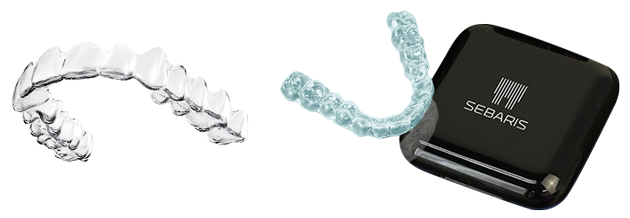Clear Aligners vs. Metal Braces: Which Is Right for You?

When it comes to achieving that perfect smile, orthodontic treatments like clear aligners and metal braces are at the forefront of modern dental care. These options offer effective solutions to correct misaligned teeth and bite issues, but they differ significantly in terms of appearance, maintenance, comfort, and more. Let’s delve into the key differences between clear aligners and metal braces to help you make an informed choice.
1. Appearance:
Clear Aligners: One of the most significant advantages of clear aligners is their nearly invisible appearance. These custom-made, transparent plastic trays blend seamlessly with your natural teeth. If you’re concerned about the aesthetic impact of orthodontic treatment, clear aligners offer a discreet solution.
Metal Braces: Traditional metal braces, on the other hand, are more noticeable due to the metal brackets and wires. However, modern options include ceramic braces with tooth-colored or clear brackets, making them less conspicuous.
2. Material:
Clear Aligners: Made from BPA-free, clear plastic, clear aligners are designed to fit snugly over your teeth, providing a comfortable and discreet orthodontic solution.
Metal Braces: Metal braces consist of stainless steel brackets and wires, which can be more visible and may cause some discomfort or irritation.
3. Maintenance:
Clear Aligners: These aligners are removable, allowing for easy maintenance of oral hygiene. You can take them out when eating, brushing, and flossing, eliminating dietary restrictions and simplifying your oral care routine.
Metal Braces: Metal braces are fixed appliances, making it more challenging to clean your teeth thoroughly. Additionally, they require periodic adjustments to tighten the braces, which can be uncomfortable for a day or two afterward.
4. Comfort:
Clear Aligners: Generally considered more comfortable due to their smooth and non-intrusive design, clear aligners lack sharp components that can irritate the cheeks and lips. Moreover, they don’t require frequent adjustments like metal braces.
Metal Braces: Some individuals may experience mild discomfort or irritation from the metal brackets and wires. Adjustments are necessary at regular intervals, which can cause temporary discomfort.
5. Treatment Duration:
Clear Aligners: The duration of treatment with clear aligners varies depending on the complexity of the case but is often shorter for mild issues, averaging around 6 to 18 months.
Metal Braces: Traditional metal braces typically require a longer treatment period, ranging from 18 months to several years, depending on the severity of the misalignment.
6. Cost:
Clear Aligners: Due to their advanced technology and customization, clear aligners tend to be more expensive than metal braces.
Metal Braces: Traditional metal braces are generally more affordable, making them a cost-effective option for many patients.
7. Suitability:
Clear Aligners: Clear aligners are effective for mild to moderate orthodontic issues but may not be suitable for severe cases or complex bite problems.
Metal Braces: Metal braces are versatile and can treat a wide range of orthodontic issues, including severe misalignments and complex cases.
Smile with Us
Get New updates by following our SEBARIS page
As seen on








Contact
Get Updates

Contact
Get Updates
© Copyright 2023 SEBARIS ALIGNERS SDN BHD – Best Invisible
Braces & Clear Aligners Treatment









